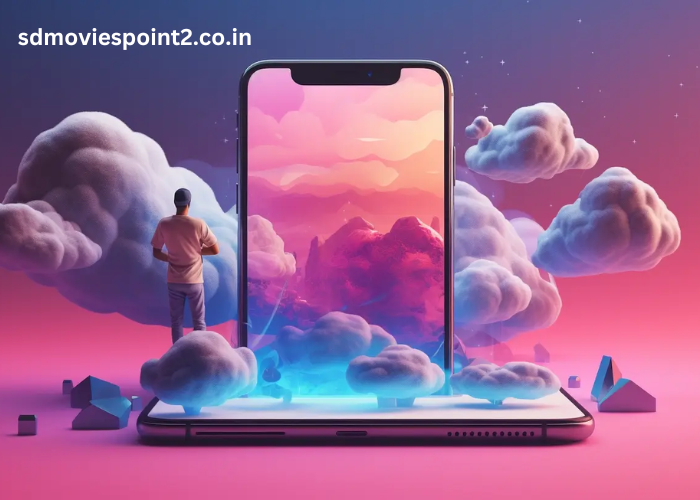Mobile Role-Playing demo slot Games (RPGs) have undergone a remarkable transformation since the early days of mobile gaming. From simple text-based adventures to complex, visually stunning experiences, mobile RPGs have become a prominent genre, attracting a wide array of players worldwide. As mobile devices have become more powerful and sophisticated, RPGs on this platform have expanded in scope, mechanics, and storytelling. This evolution has been driven by advancements in hardware, changing player expectations, and innovations in game design. In this article, we will explore the fascinating journey of mobile RPGs, from their humble beginnings to their current dominance in the mobile gaming market.
The Early Days: Simple Beginnings
The earliest mobile RPGs were a far cry from what we see today. In the early 2000s, before the rise of smartphones, mobile games were limited by the technology of the time. Phones had basic displays, limited memory, and restricted processing power. Early RPGs like Dragon Warrior Mobile and The Quest were turn-based, text-heavy experiences with simplistic graphics. These games focused on core RPG elements such as character progression, exploration, and combat, but they were severely limited in terms of depth and complexity.
Because of these hardware constraints, mobile RPGs from this era relied heavily on imagination and player engagement rather than visual and technical innovation. Nevertheless, the basic tenets of RPGs — character development, quest-based exploration, and a progression system — were present and paved the way for future advancements.
The Smartphone Revolution: A Game-Changer
The introduction of the iPhone in 2007, followed by the proliferation of Android devices, marked a turning point for mobile RPGs. Smartphones offered far more processing power, better graphics capabilities, and touchscreens, all of which opened the door to richer, more complex games. Developers began to experiment with RPG mechanics that could take advantage of these new features.
Games like Infinity Blade (2010) pushed the boundaries of mobile gaming by delivering console-quality graphics and fast-paced action, all while maintaining RPG progression systems. Zenonia (2009), one of the earliest notable mobile RPGs, introduced real-time combat, a rich storyline, and a variety of character classes, resembling the classic RPG experiences on older gaming consoles.
These games demonstrated that mobile devices could offer much more than just casual, pick-up-and-play titles. With the increased hardware capabilities of smartphones, developers were able to create more immersive and engaging RPG experiences that could appeal to both casual players and more dedicated gamers.
Free-to-Play and Gacha Mechanics: A New Frontier
As mobile gaming continued to evolve, so did its business models. The free-to-play (F2P) model became increasingly dominant, particularly in the RPG genre. Instead of charging an upfront price, many RPGs began offering free downloads, earning revenue through in-app purchases and advertisements. This shift led to the rise of gacha mechanics, a system where players spend in-game currency (often purchased with real money) to randomly unlock characters, items, or abilities.
Games like Summoners War (2014) and Fate/Grand Order (2015) popularized the gacha model, combining it with traditional RPG elements like character leveling, strategy-based combat, and story progression. Players were drawn to the excitement of unlocking rare and powerful characters, while developers benefited from the consistent revenue stream created by microtransactions.
While the gacha system has faced criticism for encouraging excessive spending and creating a “pay-to-win” environment, it has undeniably become a staple of mobile RPGs. Many successful titles today, such as Genshin Impact (2020) and AFK Arena (2019), utilize some form of gacha system, allowing developers to continuously update their games with new content while keeping them free for the broader player base.
Storytelling and Immersion: A Leap in Quality
With the rise of mobile RPGs, players began to demand more from their gaming experiences, particularly in terms of storytelling and immersion. Early mobile RPGs often had simple, straightforward plots, but as the genre evolved, so did the narratives. Games like Final Fantasy Brave Exvius (2016) and Another Eden (2017) demonstrated that mobile RPGs could offer deep, engaging stories on par with their console counterparts.
Narrative complexity became a major selling point for many mobile RPGs, with developers creating intricate worlds filled with lore, character arcs, and emotional depth. The mobile platform’s ability to deliver episodic content through regular updates further enhanced this, allowing stories to expand over time and keeping players invested for longer periods.
Moreover, mobile RPGs started integrating high-quality voice acting, cutscenes, and cinematic storytelling. These elements, once reserved for PC and console games, became more common in mobile titles, enhancing the overall experience and immersing players in fantastical worlds.
Multiplayer and Social Features: Expanding the Genre
Another significant evolution in mobile RPGs has been the incorporation of multiplayer and social elements. Early RPGs were predominantly single-player experiences, but as mobile networks improved, developers began to add real-time multiplayer features. Games like Lineage 2: Revolution (2017) and Raid: Shadow Legends (2018) allowed players to team up with others around the world, taking on dungeons, bosses, and other challenges together.
The inclusion of guild systems, leaderboards, and PvP (player vs. player) arenas helped foster a sense of community within these games, giving players a reason to engage beyond the story. This social aspect, combined with real-time cooperative or competitive gameplay, elevated mobile RPGs from solitary experiences to more dynamic, interactive ones.
The Future of Mobile RPGs: What’s Next?
As mobile technology continues to advance, so too will the possibilities for mobile RPGs. Augmented reality (AR) and virtual reality (VR) could play a significant role in future RPGs, blending real-world exploration with fantasy worlds. Games like Pokémon GO have already proven the potential of AR in mobile gaming, and this technology is likely to expand in the RPG genre.
Cloud gaming is another exciting development that could reshape mobile RPGs. Services like Google Stadia and Xbox Cloud Gaming allow players to stream high-end RPGs to their mobile devices, eliminating the need for powerful hardware. This opens the door for even more complex and visually impressive RPGs on mobile platforms.
Conclusion
The evolution of mobile RPGs has been a remarkable journey, driven by technological advancements, changing player preferences, and innovative game design. From simple, text-based adventures to visually stunning, complex, and socially connected games, mobile RPGs have grown into a diverse and rich genre. As technology continues to push boundaries, we can only imagine what the next generation of mobile RPGs will bring, further blurring the lines between mobile, console, and PC gaming experiences.



